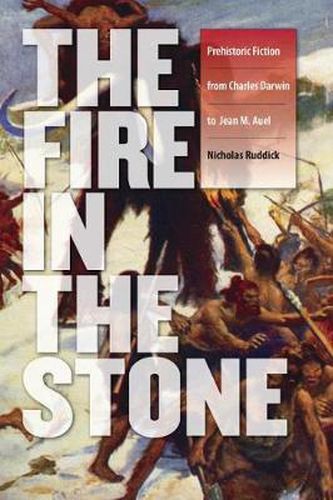Readings Newsletter
Become a Readings Member to make your shopping experience even easier.
Sign in or sign up for free!
You’re not far away from qualifying for FREE standard shipping within Australia
You’ve qualified for FREE standard shipping within Australia
The cart is loading…






The genre of prehistoric fiction contains a surprisingly large and diverse group of fictional works by American, British, and French writers from the late nineteenth century to the present that describe prehistoric humans. Nicholas Ruddick explains why prehistoric fiction could not come into being until after the acceptance of Charles Darwin’s theories, and argues that many early prehistoric fiction works are still worth reading even though the science upon which they are based is now outdated. Exploring the history and evolution of the genre, Ruddick shows how prehistoric fiction can offer fascinating insights into the possible origins of human nature, sexuality, racial distinctions, language, religion, and art. The book includes discussions of well-known prehistoric fiction by H.G. Wells, Jules Verne, J.-H. Rosny Aine, Jack London, William Golding, Arthur C. Clarke, and Jean M. Auel and reminds us of some unjustly forgotten landmarks of prehistoric fiction. It also briefly covers such topics as the recent boom in prehistoric romance, notable prehistoric fiction for children and young adults, and the most entertaining movies featuring prehistoric humans. The book includes illustrations that trace the changing popular images of cave men and women over the past 150 years.
$9.00 standard shipping within Australia
FREE standard shipping within Australia for orders over $100.00
Express & International shipping calculated at checkout
The genre of prehistoric fiction contains a surprisingly large and diverse group of fictional works by American, British, and French writers from the late nineteenth century to the present that describe prehistoric humans. Nicholas Ruddick explains why prehistoric fiction could not come into being until after the acceptance of Charles Darwin’s theories, and argues that many early prehistoric fiction works are still worth reading even though the science upon which they are based is now outdated. Exploring the history and evolution of the genre, Ruddick shows how prehistoric fiction can offer fascinating insights into the possible origins of human nature, sexuality, racial distinctions, language, religion, and art. The book includes discussions of well-known prehistoric fiction by H.G. Wells, Jules Verne, J.-H. Rosny Aine, Jack London, William Golding, Arthur C. Clarke, and Jean M. Auel and reminds us of some unjustly forgotten landmarks of prehistoric fiction. It also briefly covers such topics as the recent boom in prehistoric romance, notable prehistoric fiction for children and young adults, and the most entertaining movies featuring prehistoric humans. The book includes illustrations that trace the changing popular images of cave men and women over the past 150 years.